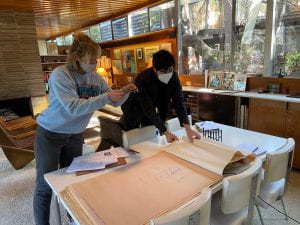Legacy Businesses in Immigrant Neighborhoods
Small businesses provide much more than goods and services. Over time, they become neighborhood anchors and a key source of culture and community—especially for new Americans.
Heritage conservationists are increasingly turning to legacy business programs as economic development strategies to combat rising rents, gentrification, and the erosion of community character, particularly in ethnic and immigrant neighborhoods. In this episode, producer Willa Seidenberg talks with recent USC graduate Xiaoling Fang about her thesis, Legacy Business Program Implementation in American Urban Immigrant Neighborhoods.
Xiaoling explored some of the longstanding small businesses in L.A.’s Chinatown and Little Tokyo neighborhoods, and how legacy business programs, like the ones recently adopted in Los Angeles, can be used as a tool to help culturally significant and beloved businesses survive.
Listen below, and click here for the transcript.

